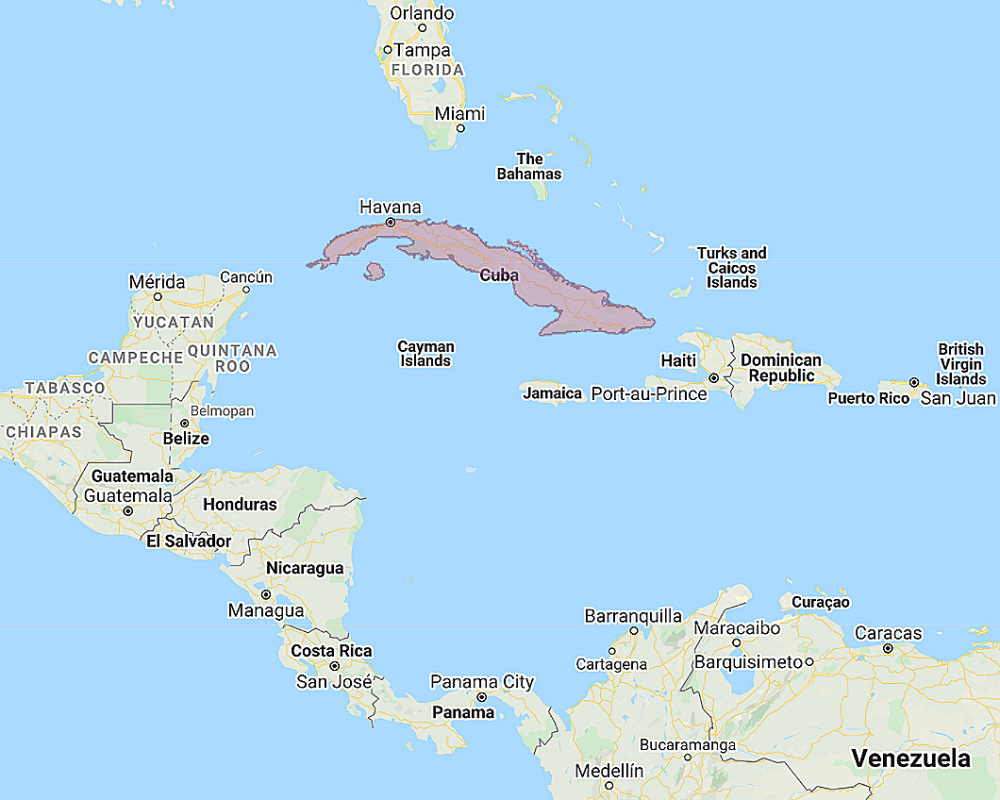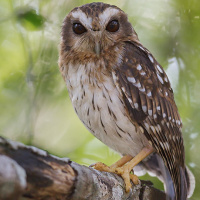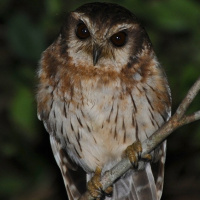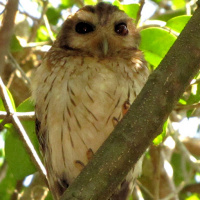Introduction
The Bare-legged Owl is a relatively small owl with long, bare legs and a rounded head with no ear-tufts. It has been previously placed in the genus Otus and called the Cuban Screech Owl, as well as the genus Gymnoglaux and called the Cuban Bare-legged Owl.
Photo Gallery (3 pictures)
Information
Description: The facial disc is whitish-buff with an indistinct rim. The eyes are brown with prominent whitish eyebrows.
Cere and bill are greyish-yellow. The neck and throat are washed with buffish-brown, and finely spotted black.
Upperparts are brown, sometimes rufous, with blackish spots on the crown and hindneck. The feathers of the mantle and wing-coverts have whitish tips and
darker areas in the centre. Some of the scapulars have small whitish areas, forming a very indistinct, sometimes almost imperceptible row of whitish spots
across shoulder. The outer webs of the primaries have whitish spots, while the inner webs are uniform brownish. The secondaries have thin whitish bars.
There are ten tail feathers, the outer ones having thin whitish bars, with the central feathers being uniform. Occasionally, all the tail feathers are plain.
Underparts are cream-whitish with a buffish suffusion, and have distinct drop-shaped dark shaft-streaks.
The relatively long tarsi and the toes are totally bare and coloured yellowish-brown. The claws are horn with darker tips.
Size: Length 20-23cm. Wing length 137-154mm. Tail length 71-88mm. Weight of one specimen 80g.
Habits: The Bare-legged Owl is a nocturnal bird, roosting during the daytime in densely foliaged trees, thickets, crevices in rocks, or in caves. They are often found on the ground where they search for prey.
Voice: A soft, accelerating coo-coo-coo-guguguk, becoming slightly higher-pitched towards the end. The female sometimes replies with a high-pitched downward-inflected yiu-yiu-yiu.
Hunting & Food: The Bare-legged Owl feeds mainly on insects and other arthropods. They will also take frogs, and rarely, small birds. They frequently hunt on the ground, but will also hunt from a perch, swooping down on prey.
Breeding: Reportedly breeds during the first six months of the year. Nests in a hole or crevice in cliffs, a tree cavity, or a cave in limestone country. Normally two white eggs are laid, and incubated by the female alone. One pair has been known to live for seven years in the same territory.
Habitat: Forest, thickets, and semi-open limestone country with caves and crevices.
Distribution: Cuba and the Isle of Pines.

Range of the Bare-legged Owl Margarobyas lawrencii
Status: Reportedly common in most of its range.
Original Description: Sclater, Philip Lutley, and Salvin, Osbert. 1868. Proceedings of the Scientific meetings of the Zoological Society of London for the year 1868 (PZS): Pt. 2, p. 327.



